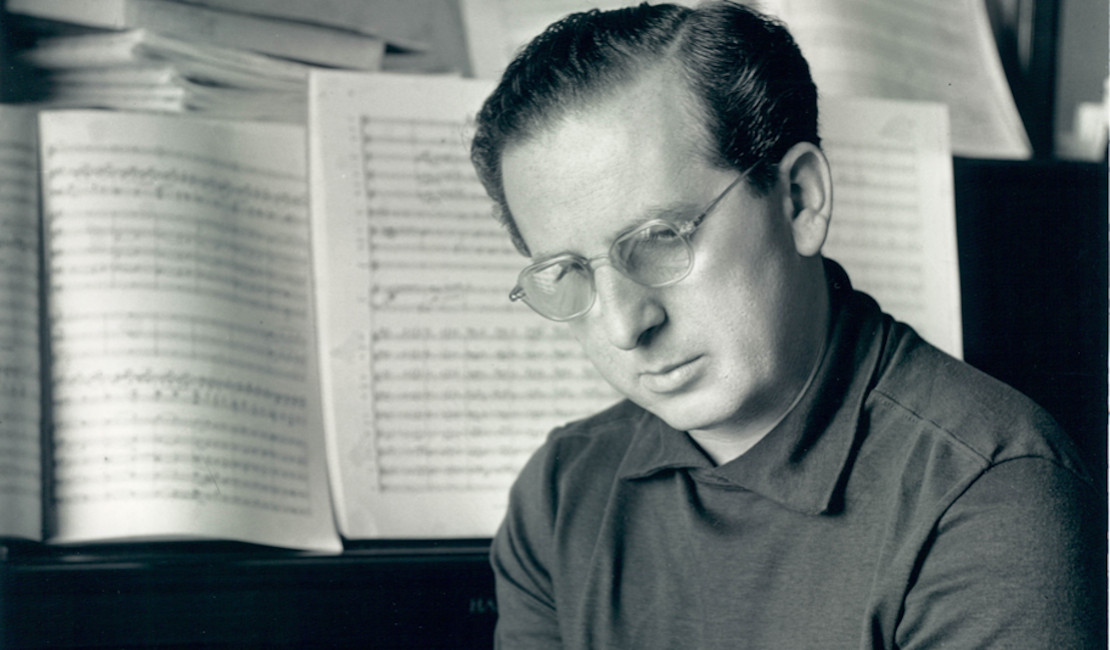Highlights from the Waxman Catalogue

The catalogue of German-American composer Franz Waxman is a formidable collection of work for the modern concert hall, encompassing not only the film scores for which he is best known, but concert works of great significance for orchestra, chorus, and chamber ensemble. Like many of his Judeo-German artistic contemporaries, Waxman was forced to flee Nazi Germany for Paris, and later, Hollywood. He quickly cemented for himself a place among the greats of twentieth-century film music, composing scores for 150 pictures, including Sunset Boulevard, The Philadelphia Story, A Place in the Sun, Bride of Frankenstein, Rebecca, Rear Window, The Spirit of St. Louis, Peyton Place, and Taras Bulba. He received a staggering twelve Academy Award nominations, winning the Oscar twice in consecutive years for Sunset Boulevard and A Place in the Sun. In addition to his film and concert writing, Waxman founded the Los Angeles International Music Festival in 1947 and conducted major works around the world.
For Soloist and Orchestra
Carmen Fantasie (for violin and orchestra) (1947) 10 min
(based on themes from the opera of Georges Bizet)
Waxman’s Carmen Fantasie was written for a pivotal scene in the 1947 film Humoresque, which follows the story of a fictional New York City violinist's complicated love affair with his wealthy patron. Upon seeing the film, Jascha Heifetz requested an expanded version from the composer, which he subsequently performed worldwide to great success. Several versions have followed, including those for viola, cello, bass, accordion, marimba, trumpet, tuba, flute, and concert band.
Tristan and Isolde: Fantasie (for violin and orchestra) (1947) 10 min
(based on themes from the opera of Richard Wagner)
Also from Humoresque, the Tristan and Isolde Fantasie showcases Waxman’s skill as an orchestrator to great effect. It is also available in versions for viola and cello.
Goyana (Four Sketches) (1960) 12 min
Waxman composed Goyana (for piano solo, percussion, and string orchestra) for the 50th anniversary of the Los Angeles County Museum of Art. Each movement, or "sketch," is named for a different painting by Francisco Goya: 1. La Marquesa de Santa Cruz 2. Bal Champêtre 3. The Miracle of St. Anthony 4. The Witches’ Sabbath.
Concert Selections from Film Scores
Sunset Boulevard: A Sonata for Orchestra (1950) 14 min
Waxman won his first Academy Award for the score to Sunset Boulevard; in 2005, the American Film Institute named it among the twenty-five most memorable film scores of all time, cementing it as a masterpiece of the genre. In the 1990s, conductor John Mauceri arranged a Sonata version specifically designed for the concert hall, using only Waxman’s original score and orchestration.
A Place in the Sun: Suite (1951) 8 min
Only one year after his win for Sunset Boulevard, Waxman received another Oscar for the score to A Place in the Sun. The concert suite, arranged by the composer for a performance at the Hollywood Bowl in 1963, is notable for its use of a jazz-inspired high alto saxophone.
Taras Bulba: The Ride of the Cossacks (for orchestra) (1962) 5 min
Distinct from both Sunset Boulevard and A Place in the Sun, the film Taras Bulba is a sweeping 1960s epic about the powerful 16th-century Ukrainian Cossacks. Waxman knew the music would require something unique; when he found himself in Kiev on a conducting tour of the U.S.S.R., he took the opportunity to study the folk music of the Ukrainian people and incorporate it into his rousing, rhythmical score.
For Chorus and Orchestra
Joshua (A Dramatic Oratorio in Two Parts) (1959) 1 hr 20 min
Text by James Forsyth, based on the Book of Joshua
According to one contemporary reviewer, Joshua "has a range of Bach to Bartók" and its scale belies the drama inherent in its subject from the Hebrew Bible: Joshua's shouldering of power, the Battle of Jericho, and the end of his long life and leadership. Joining the chorus and orchestra are a narrator and four vocal soloists: one mezzo-soprano, two tenors, and a baritone.
The Song of Terezin (1965) 45 min
The Cincinnati Symphony commissioned The Song of Terezin for its 45th annual May Festival in 1965. Waxman was inspired by I Never Saw Another Butterfly, a collection of poetry by children imprisoned in the Nazi concentration camp of Theresienstadt between 1942 and 1944. Of those 15,000 children, only 100 would survive to see the end of World War II; the rest were transferred and put to death in the mass killings at Auschwitz and other sites. The Song of Terezin is a five-movement work for SATB chorus, children’s chorus, and mezzo-soprano soloist with text in English and German adapted by the composer.
For Orchestra and Ensemble
Auld Lang Syne Variations (for piano quartet) (1947) 14 min
The Auld Lang Syne Variations were written, appropriately, for a party thrown by Jascha Heifetz on New Year's Eve, 1948. Each of the playfully-named four movements presents the theme in the style of a different composer: 1. Eine Kleine Nichtmusik (Mozart), 2. Moonlight Concerto (Beethoven), 3. Chaconne a Son Gout (Bach), and 4. Homage to Shostakofiev (Shostakovich and Prokofiev).
Sinfonietta (for string orchestra and timpani) (1955) 12 min
Waxman composed the entirety of the Sinfonietta on a transatlantic journey from New York to Europe. Its three varied and compact movements are ideal for choreographers, while conductors will find in it an appealing concert opener.
Elegy for Strings and Harp(s) (1948) 3 min
Originally from the 1943 film Old Acquaintance, Waxman adapted and re-titled this lush and moving music in memory of Leo F. Forbstein, head of the Warner Brothers music department from 1929 to his death in 1948.
Original solos, chamber music, and piano reductions are available for sale at Classical on Demand.
For more information, please contact your local Wise Music Promotion Team. See Contact Us.
(November 2022)
